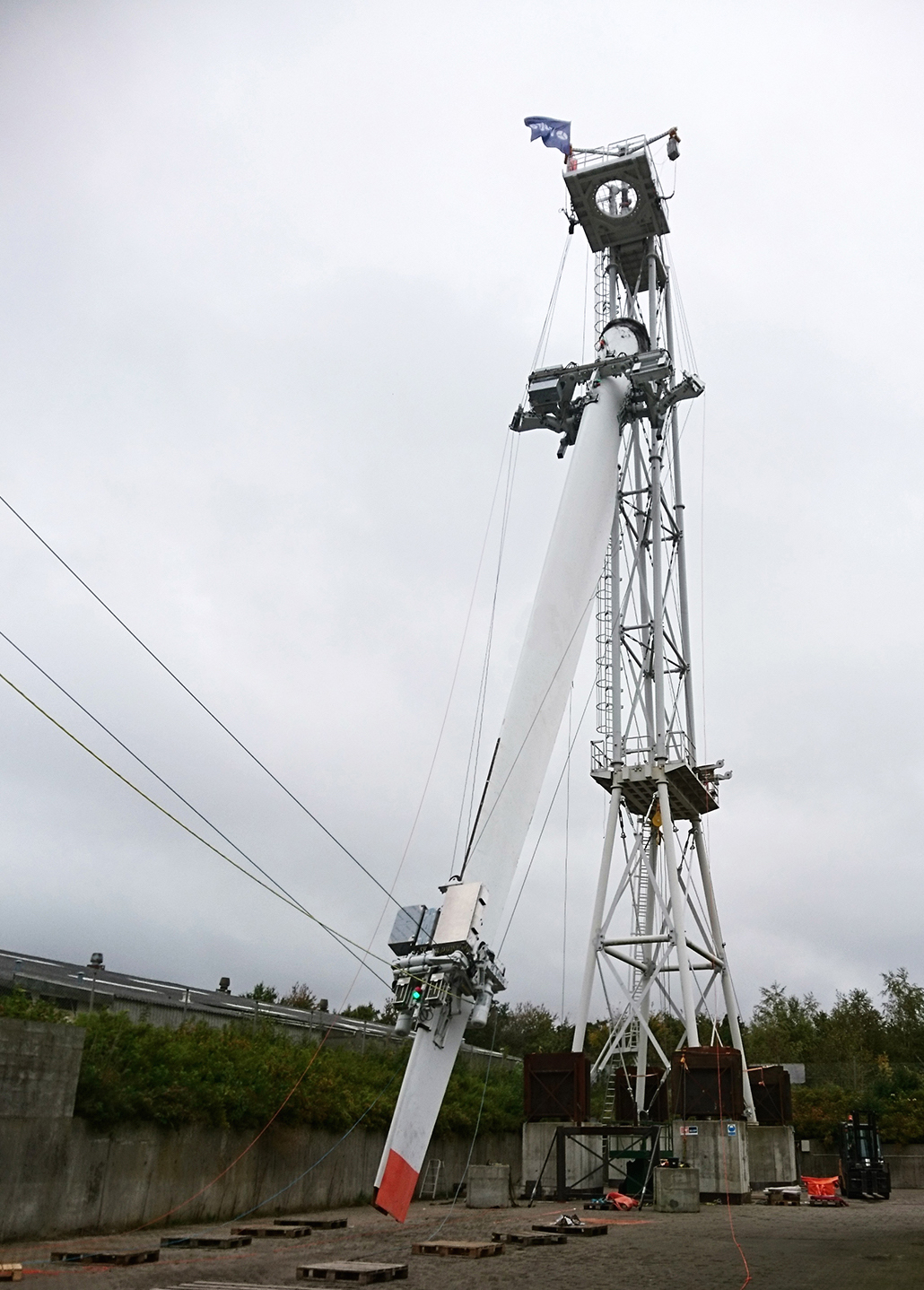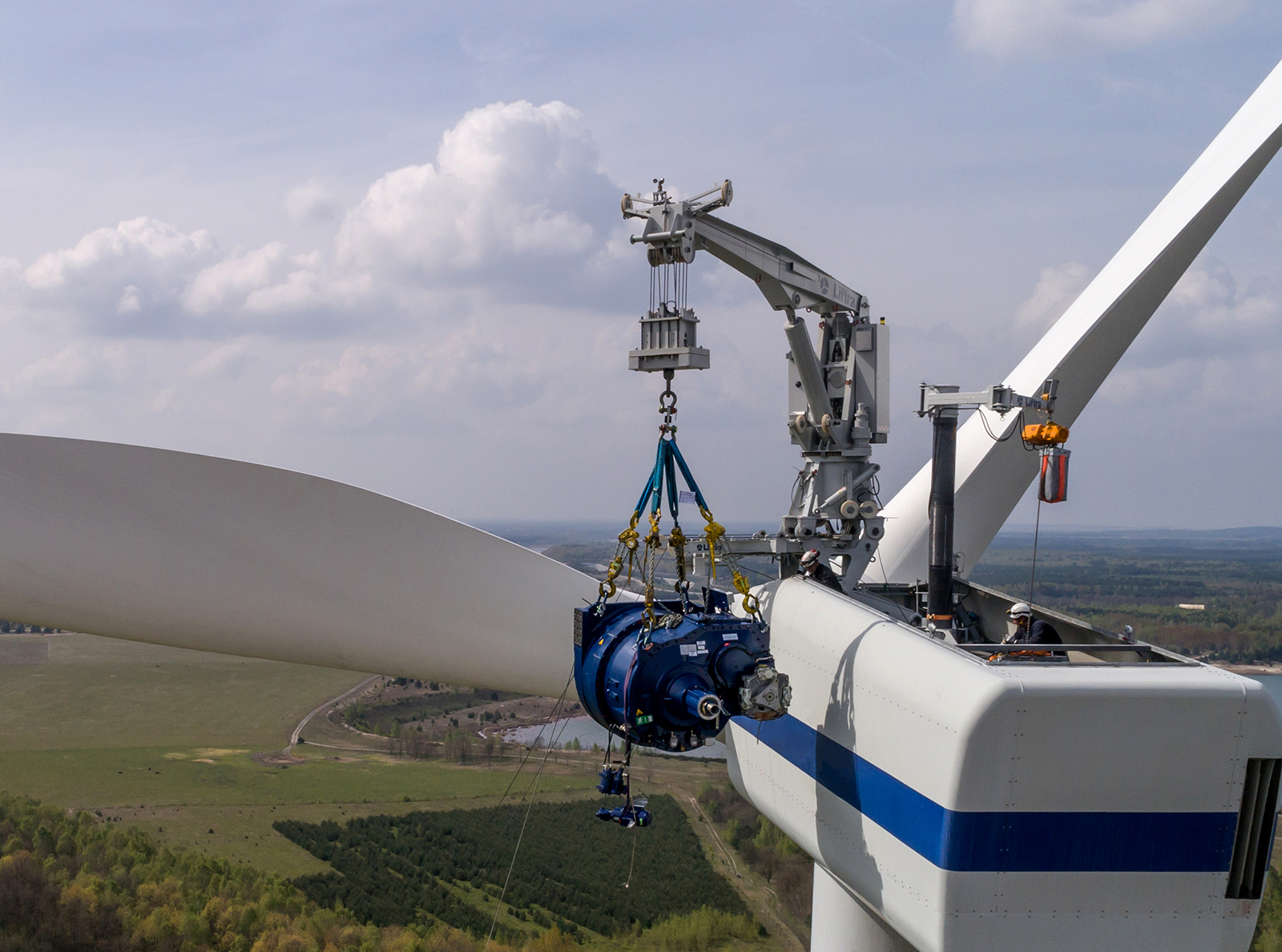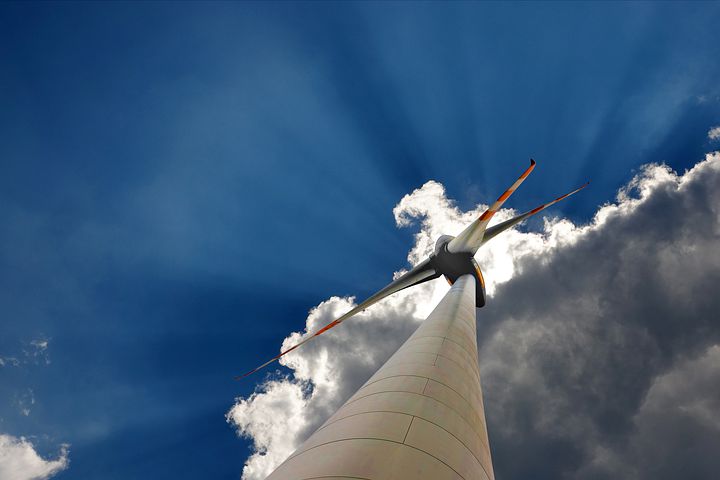The Wind Industry Goes Craneless
Are we, as an industry, getting closer to eliminating the need for mobile cranes entirely?
The market for the installation, operation and maintenance of wind turbines continues to grow globally. In order to keep pace with generation capacity, we need to rethink processes and technologies across the industry.
 We're seeing plenty of developments in the fields of preventive maintenance and small corrections; it's the areas of installation and major corrections that pose the greatest continuing challenges. In a bid to provide operators with options that have major economic and environmental advantages, more and more companies are brainstorming solutions that aim to remove mobile cranes from the equation altogether.
We're seeing plenty of developments in the fields of preventive maintenance and small corrections; it's the areas of installation and major corrections that pose the greatest continuing challenges. In a bid to provide operators with options that have major economic and environmental advantages, more and more companies are brainstorming solutions that aim to remove mobile cranes from the equation altogether.
Anyone in this business will tell you that crane rental fees can be hefty. Less known, yet just as relevant, are the many indirect costs that frequently follow; bridges and roads may require reinforcement to allow passage of the trucks carrying the crane, the site itself may need elaborate preparation to provide a level area big enough for the large crane structure, and special permits may need to be obtained.
Turbine height is another cost-inflating factor. Current turbine developments are nearing 10 MW capacity. These systems require increasingly taller towers, many of which already reach above 150 meters - adding to the headaches facing the corrective maintenance field.
Finally, availability presents a separate challenge. Until the crane reaches the wind farm and performs the necessary operation, turbine downtime and the resulting loss of production may last for days or weeks, depending on the number of cranes needed and the distance to the site.
With all this in mind, the industry has potential for huge savings on mobilization, installation, and maintenance. If we managed to eliminate the need to use mobile cranes with smarter solutions, it would have a major impact on both the economic and environmental cost of energy, ultimately reducing the bill for the end consumer while sustaining our natural resources.
 The outlook for the coming years is intriguing. Public entities across Europe recognize the incentive to secure their position as world leaders in this segment of the industry, and are awarding funding support to companies that prioritize innovation and investment in R&D.
The outlook for the coming years is intriguing. Public entities across Europe recognize the incentive to secure their position as world leaders in this segment of the industry, and are awarding funding support to companies that prioritize innovation and investment in R&D.
The advance of craneless systems includes:
- In Spain, an engineering company has been recognized as a benchmark in the construction of concrete tower sections and foundations worldwide. The company has been refining solutions for self-elevating tower sections since 2014, and has received support from the Eurostars Programme.
- A relative newcomer to the industry has won several patents, including one for its technology for self-erecting towers based on a lattice structure. The solution promises to save 30 percent of total tower costs, while reducing the assembly time by up to 50 percent, and has won support from the European ERDF fund.
- A Dutch manufacturer of direct-drive wind turbines has developed a climbing crane for installing turbines. The crane scales the turbine, from base to the top, by means of a series of steps installed in each tower section. This setup allows the crane to install the full tower, section by section, climbing upwards in the process. It can even be used to install the rotor without incurring the costs of mobilizing a large crane.
- Denmark boasts a pioneer in the field of independent craneless technologies. In 2013, this company introduced a self-hoisting crane for replacing gearboxes and generators, and recently unveiled a new technology for replacing single blades and pitch bearings. Both technologies require either one or two 40-foot containers to mobilize, and rely on a set of hoists installed up-tower to perform corrective operations with no mobile cranes involved. EUDP has supported both solutions; the crane has received funding support from Horizon 2020, while the blade replacement design has been backed by the Market Development Fund.
 More craneless innovations exist, and it is going to be an exciting trend to watch in 2018, and for years to come. The future is very promising, as more solutions address key challenges faced by operators industry-wide. The technologies highlighted here represent more environmentally responsible solutions to common problems. After all, we all want to reduce emissions, encourage the installation of renewables in hard-to-access areas, and further reduce the cost of energy.
More craneless innovations exist, and it is going to be an exciting trend to watch in 2018, and for years to come. The future is very promising, as more solutions address key challenges faced by operators industry-wide. The technologies highlighted here represent more environmentally responsible solutions to common problems. After all, we all want to reduce emissions, encourage the installation of renewables in hard-to-access areas, and further reduce the cost of energy.
Thomas Lamberth Sandbjerg and Jon Valdivielso GarcÃa are both with Liftra and are based in Denmark and Spain, respectively. Founded in 2003, Liftra designs and manufactures special lifting and transportation equipment for the global wind turbine industry.
LIFTRA | www.liftra.com
Volume: 2018 March/April








